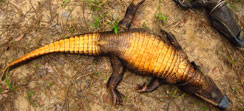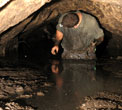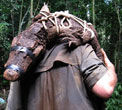
The Orange Cave-Dwelling Crocodiles
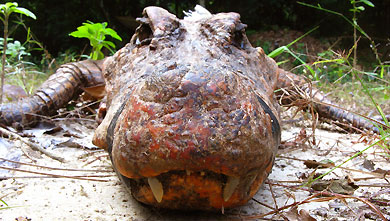

A Unique discovery
The Abanda caves in Gabon host a population of cave-dwelling crocodiles. They spent their entire life in these caves and had to adapt to the undergound conditions. Who are these unique reptiles living in the caves of Gabon ?
How did these crocodiles happen to be trapped in Abanda caves ?
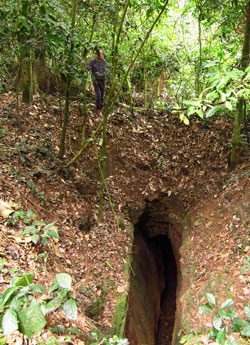 We don't have a definite answer to this question. The Abanda cave network is based on a system of faults. Some of the crocodiles live completely isolated from the exterior, the only access being through a 7 m deep shaft.
We don't have a definite answer to this question. The Abanda cave network is based on a system of faults. Some of the crocodiles live completely isolated from the exterior, the only access being through a 7 m deep shaft.
We think that entrances existed in the past, but they are now filled with sediments, preventing the crocodiles to escape.
One question needs also to be solved, the reason why these crocodiles initially found shelter in these caves.
How many of them are there ?
During our two expeditions in 2010 and 2011, organised by IRD and Foundation Liambissi, we oberved twenty individuals in th ecaves. Almost all of them could be captured by Matthiew Shirley, who measured them, took samples, marked them and released them.
Are they different from the outsde crocodiles ?
They look very close to the Dward Crocodile, (Osteolaemus tetraspis), however, they differ by several points. They are broader, almost blind, and their skin is orange-coloured, which has never been observed in the dwarf crocodile from the exterior. 
The biggest captured specimen was 1.70m long. This length is very high for the species and the crocodile must be very old. We oberved several individuals more than one meter long.
Our hypothesis to explain their orange colour is a chemical attack of the skin. They live permanently in a eau croupie dans laquelle fermentent les excréments de chauves-souris. L'odeur est d'ailleurs presque insoutenable.
And genetically ?
The first DNA analysis made in 2010 showed a genetic difference of a few percents between the crocodile inside the caves and the crocodile found elsewhere in Gabon. The population has therefore been isolated for several thousands years. More blood samples have been taken in 2011, both on cave crocodiles and on outside crocodiles. The number of sample will give statistically significant results.
In the caves, what are their food diet ?
These crocodiles live in the absolute darkness. The food is scarce and poorly diversified. We obtained the stomach content by regurgitation and it appears that the cave crocodiles have a very original diet. Whereas outside crocodiles feed on shrimps, crabs, frogs, we found in cave crocodiles' stomachs crickets, bats, insects and a big amount of algae.
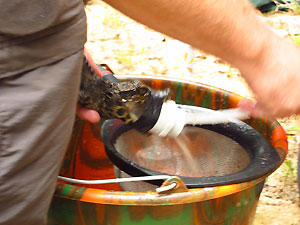
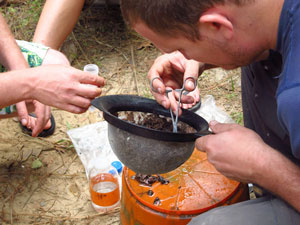
What will be the next steps of your research ?
We want to know why these crocodiles live in what seems to be an unhospitable environment. Is it to survive a past climate change ? to be protected from predators ? Have they just been trapped there ?
Many questions a new expedition will bring answers.
You can check here the first results of the 2015 Abanda expedition
or read next: Expedition logistics
Share this page with your friends

